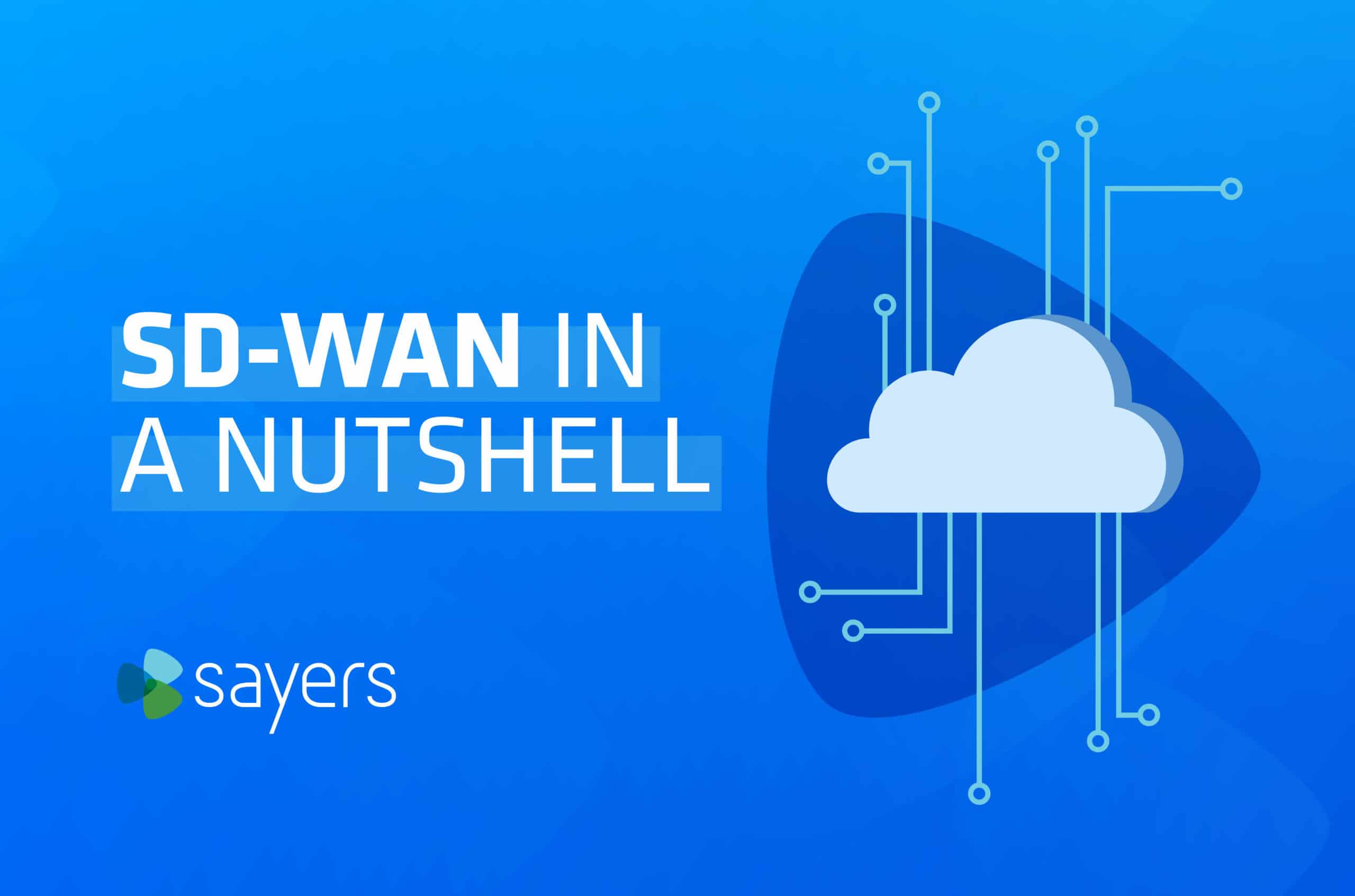SD-WAN IN A NUTSHELL
Posted September 8, 2021 by Sayers

In today’s era, traditional WAN networking is not enough to handle the proliferation of application requirements and shifting gears to a cloud-first model. The router-centric model that needs the business to conform to the network has shifted to a business-first model. A business-first model is a top-down approach not imposed by the constraints of the legacy router-centric model. Instead, with SD-WAN solutions, the ever-growing need of the business allows the network to conform to those changes. The biggest type of change that the network has to conform to is moving to the cloud. Since the applications have moved to the cloud, the traffic patterns have changed. Now SD-WAN is here to save the day!
What is SD-WAN?
First, to define a WAN – a WAN is a number of networks that are geographically connected over long distances using routers sharing a common architecture. Now SD-WAN, or Software-Defined Wide Area Networking, brings the advantage of using software in the WAN. Using software, we can now separate the functions of what is inside any single WAN router platform. When we split those functions we allow the control plane to sit in the cloud or on-prem while the data plane resides at the remote site. All orchestration is done from the control plane and pushed to the data-plane device at the sites using a simplified user interface. The need for a CLI and manual configuration of each router at each location can be eliminated. When looking at this from a thousand-foot view at a massive scaling of sites, the number of routers that need to be configured and the amount of time this saves is of immeasurable magnitude.
Why SD-WAN?
With the adoption of the cloud, enterprises are facing a set of new challenges and questions they are tasked with such as:
- How to deliver a consistent quality of experience for users accessing cloud applications?
- How to expedite the deployment, moves, or decommission of new and existing sites and applications in an automated fashion that reduces human intervention and saves CAPEX/OPEX and total cost of ownership (TCO)?
- How to provide end-to-end security while increasing bandwidth and accessibility to applications with the highest level of SLA?
- How much time is typically spent on troubleshooting the WAN?
- What is the impact on your business if users cannot connect to their application?
These are just a few of the many fundamental questions an enterprise can run into. Luckily, SD-WAN technologies have given us a networking model that centrally orchestrates and programs the configuration automatically to multiple devices at the same time while allowing the network to continuously connect users to applications regardless of where they are and deliver a consistent experience 100% of the time. The network can now adapt to the growing changes and requirements of the business.
SD-WAN can provide benefits ranging from:
- Utilizing any type of transport
- Highest quality of experience for users
- Orchestration and automation through a single pane of glass
- Support and integration for any cloud providers
- Advanced real-time reporting and visibility
- End-to-end segmentation
- Self-learning and self-healing
- Extensive 3rd party security ecosystem
Key Takeaways
The list of benefits and features goes on. The key takeaway is that SD-WAN addresses all types of traditional or legacy WAN issues and should be considered as a future keystone when architecting the next-generation WAN. It is designed and built to enable organizations to see the complete potential and transformational assurance of the cloud.
SD-WAN features and benefits far outweigh the CAPEX/OPEX and TCO of any existing traditional WAN deployment. With over 60 different SD-WAN vendors and solutions, this number continues to grow. It can be difficult to dedicate the time and research to determine the best SD-WAN solution for an organization. At Sayers, we are dedicated to consuming and analyzing all types of SD-WAN vendors to pro-actively help an enterprise make that decision. Those who are onboard first are reaping the fruits already and continue to accelerate the adoption of SD-WAN. If you don’t have SD-WAN in place, now is the time to make your move!


